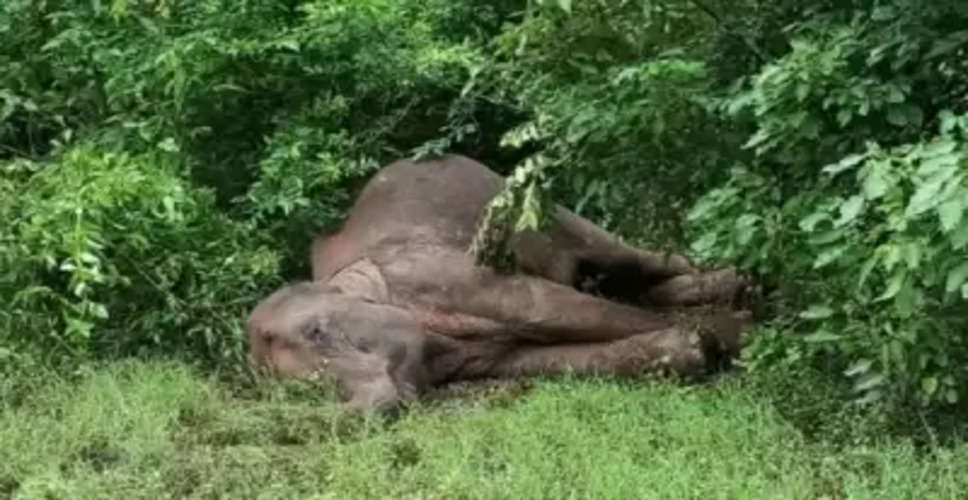As tuskers kill 462 people in 5 years, J'khand raises pitch for elephant corridors

According to the Ministry of Environment, these attacks come to light almost every week.
Recently, the Ministry in a response to a RTI application, had informed that 462 people had been killed in the state in elephant attacks from 2017-2022 and about 50 elephants had died due to various reasons.
According to the figures of the forest department, 20 elephants died in five years after they got electrocuted. Some deaths were also reported in train accidents and due to poachers.
In February, 16 people were killed by an elephant separated from its herd within 12 days in five districts of the state, namely Hazaribagh, Ramgarh, Lohardaga, Chatra and Ranchi, as per the forest department.
The tusker trampled crops, damaged walls at a dozen places and uprooted several trees. During this, it attacked at least 20 individuals, of whom only four survived.
The Ranchi SDO had to then impose prohibitory orders under Section 144 in Itki block and surrounding areas to prevent more attacks.
Jharkhand's Principal Chief Conservator of Forests (Wildlife), Shashikar Samanta said that a committee of forest officials has been formed in four districts which is probing why the tusker went berserk.
Several studies and research carried out in the last three-four decades to find out the causes for such anger seen in elephants, revealed that human activities have disturbed the natural habitats and their traditional way of movement, including the roads, which serve as corridors have been continuously disturbed.
The Wildlife Trust of India (WTI) had presented a report in 2017, which stated that a 21,000 sq kilometre area of Jharkhand, Odisha, Chhattisgarh and South West Bengal is the habitat of elephants. Forty five per cent of the people killed in the country due to human-elephant conflict are from this region.
As per official figures, Jharkhand is home to 11 per cent of the country's wild elephant population. The decline in its population is concerning, in 2017, 555 elephants were said to be in the state, which marked a major decline from 688 reported in the previous census conducted five years ago.
So far in 2022-2023, more than 100 people have been killed in elephant attacks, 133 such deaths occurred in 2021-2022 and 84 were killed in 2020-2021.
Both humans and elephants are being adversely affected by the human-elephant conflict and the damage being done is not one-sided. <br> <br>Forest and environmental experts believe that corridors should be developed for the safe movement of elephants from one forest to another, which should have limited human activities.
There are 27 notified elephant corridors in 22 states of the country.
According to a report, there are 108 elephant corridors marked in India. Of these, 14 are in Jharkhand, but not a single one is notified. In such a situation, construction and mining work without thinking of the animals is being done in these areas.
Former member of the Government of India's steering committee for Project Elephant, D.S. Srivastava had said that unplanned development work, mining activities, unregulated grazing, forest fires and encounters between Maoists and security forces have caused major damage to the animal's habitat.
Elephant corridors from Saranda forests in Jharkhand to Sundergarh in Odisha were destroyed due to mining. He stated that elephants face food shortage due to the thinning of the bamboo and grass canopy.
According to Narendra Mishra, a retired Indian Forest Service officer, the natural habitat of elephants in Jharkhand has been continuously affected due to excavation, forest blasting, Maoist activities and the misdeeds of smugglers.
For instance, the forests of Kolhan division of the state were famous for being a natural habitat of elephants, but have suffered a lot in the last three decades with the increase in mining projects and expansion of roads and railway lines.
Mishra said that a tusker's anger naturally flares up as it wanders out of the forest in search of food and shelter and gets attacked by humans.
In last year's budget session of the Jharkhand Legislative Assembly, Forest Department in-charge, Champai Soren, in response to a question related to the menace of elephants, had said that in 2021-22, the Forest Department had paid Rs 1,19,00,000 (Rs one crore and nineteen lakh) as compensation in cases related to damage to life and property by elephants in the state.
He had said that many factors had led to an increase in the human-elephant conflict such as the animals' migration area getting affected due to the increase in population.
He stated that elephants also get attracted to the smell of alcoholic beverages being made in the villages.
The Forest Department has also formed a Quick Response Team to prevent elephant-human conflict, which works to raise awareness among people and attempts to drive the tuskers back to the forest using scientific and traditional methods.
--IANS<br>snc/fs/bg
